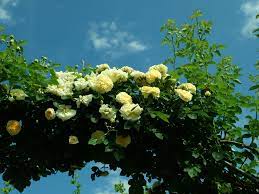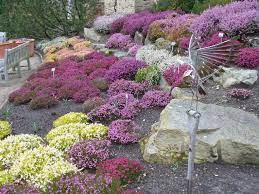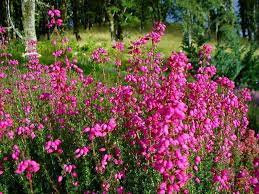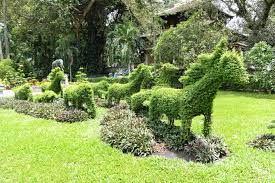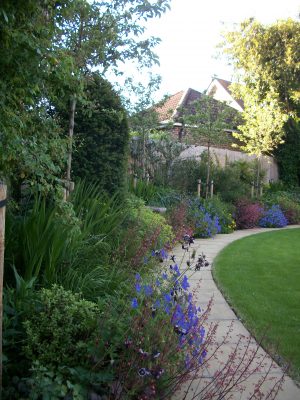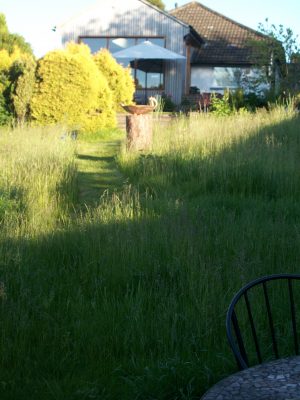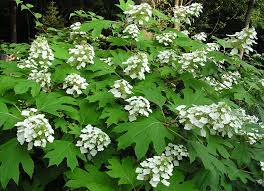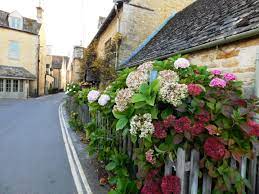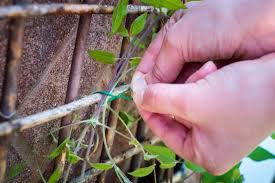
A stunning example of a sloping garden.
Although lots of people feel a steeply sloping garden or area is a hindrance and a problem area, they do have their advantages. It allows you to see a cascade of planting with different textures and colours, also most banks can be viewed from many angles giving alternative views. But there is no doubt they do have their planting and maintenance challenges. Here are some plants to consider.
Cotonester dammari: This is a must for all steep and sloping sites, this plant will grow almost any where, although it will not like water logging. a very low growing shrub that hugs the ground. With evergreen foliage of neat dark green leaves and small white flowers in spring, followed by blood red berries in the autumn.

Ceanothus griseus var. horizontallis ‘Yankee point’
Ceanothus griseus var.horizontallis ‘Yankee point’: This is a prostrate form of ceanothus with dark evergreen foliage and small mid blue puffy flowers in May-June. Grows on most well drained soils. It reaches heights of 1-1.3m or higher on good soils, and has a very wide spread. It will add a good splash of colour to a planted bank and may even have the odd repeat flower in the early autumn.

Rosa ‘Snow Carpet’
Rosa ‘Snow Carpet’: This delightful rose, literally crawls along the ground with neat leaves and small clusters of mini white roses, repeat flowering through the summer into early autumn.

Juniperus horizontalis ‘Bar Harbour’
Juniperus horizontalis ‘Bar Harbor’: This is a wonderful low growing conifer, it may be a bit slow but it is worth planting. It has attractive blue green foliage which turns a dusky purple in cold winter months.

Helianthemum ‘Wisley Primrose’
Helianthemum ‘Wisley Primrose’: This is a wonderful rock rose, low growing it will spread well. With sliver evergreen foliage and a clear yellow open flower from May to June.

Rosmarinus officinallis ‘Prostratus Group’
Rosmarinus officinallis ‘Prostratus Group’: This lovely shrub has evergreen sliver foliage which is low growing and spreading. With rich mauve flowers in late spring to early summer. With the added advantage that it is a good cooking herb.

A planted bank with dram from top to bottom
Top Tips: When considering planting a bank, do look at how steep it is, will you be able to comfortably stand to weed and prune? Also think about the depth of the boarders on a slope, if possible you want to be able to stand on a path or step and lean into the planting to weed.. Particularly as most of the shrubs I have suggested, have a dense habit of growth and standing in amongst the planting would be difficult and may well ruin the shape of your shrubs. So if it is a very wide slope, or very steep it may be advisable to break the slope up with a flight of steps with wide landings and possibly the odd path, so you can maintain your planted slopes better.
I hope I have given you some ideas and inspiration to get started on tackling your own planting bank. If you need help with your planting project or with any aspects of garden design, then I know just the woman to give you a hand. Do give me Emily a ring on 01273 470753.


























